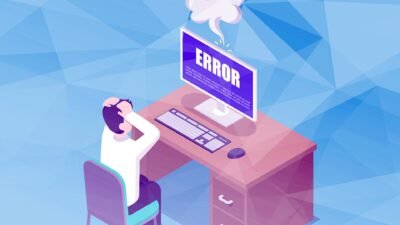Enhancing Workplace Safety with Risk Management Hazard Software

In today’s dynamic industrial landscape, managing risks effectively is paramount to ensuring the safety of employees, assets, and the environment. As organizations strive for efficiency and compliance, leveraging advanced tools like risk management hazard software has become essential. This article explores the concept of risk management, the hazards it addresses, and how software solutions are revolutionizing safety practices across industries.
Understanding Risk Management in Hazard Control
Risk management involves identifying, assessing, and mitigating risks that could disrupt operations or compromise safety. Hazards—ranging from physical injuries to environmental damage—pose serious challenges, especially in sectors like manufacturing, construction, and healthcare. Proactively managing these hazards is crucial for regulatory compliance, financial stability, and the well-being of workers.
Common Workplace Hazards
- Physical Hazards: Slips, falls, or exposure to harmful machinery.
- Chemical Hazards: Handling toxic substances without proper precautions.
- Biological Hazards: Exposure to harmful microorganisms or diseases.
- Ergonomic Hazards: Improper workstation setups leading to strain injuries.
- Environmental Hazards: Noise, heat, or poor air quality affecting health.
The Role of Risk Management Hazard Software
Risk management hazard software is a cutting-edge solution designed to streamline the identification, evaluation, and mitigation of workplace risks. It provides organizations with a centralized platform to monitor hazards, implement preventive measures, and ensure compliance with safety standards.
Key Features of Risk Management Hazard Software
- Hazard Identification and Assessment:
The software helps users pinpoint risks through automated checklists, incident tracking, and real-time hazard reporting. - Risk Analysis Tools:
Advanced analytics prioritize risks based on their severity and likelihood, enabling focused mitigation efforts. - Regulatory Compliance:
Many software platforms integrate compliance requirements, ensuring that organizations meet local and international safety standards. - Incident Reporting and Investigation:
Streamlined workflows allow for quick reporting and root-cause analysis of workplace incidents. - Training and Awareness Modules:
Some solutions offer employee training features to promote hazard awareness and preventive practices. - Customizable Dashboards:
Organizations can monitor safety performance metrics and generate detailed reports tailored to their needs.
Benefits of Using Risk Management Hazard Software
- Enhanced Safety:
By proactively identifying and addressing risks, organizations reduce the likelihood of accidents and injuries. - Cost Efficiency:
Preventing incidents minimizes downtime, legal liabilities, and medical costs. - Improved Compliance:
Automated updates on regulations ensure businesses stay compliant, avoiding fines and reputational damage. - Data-Driven Decision Making:
Access to real-time data helps leaders make informed safety decisions and prioritize critical risks. - Employee Engagement:
Tools that involve employees in hazard reporting foster a culture of safety and accountability.
Choosing the Right Risk Management Hazard Software
Not all solutions are created equal. When selecting the right risk management hazard software, consider:
- Ease of Use: Intuitive interfaces encourage adoption across teams.
- Customization: The ability to tailor features to industry-specific requirements.
- Integration: Compatibility with existing systems like HR or asset management software.
- Scalability: Adaptability to grow with organizational needs.
- Customer Support: Access to training, troubleshooting, and regular updates.
Industries Benefiting from Risk Management Hazard Software
- Manufacturing: Mitigating machinery-related risks and ensuring compliance with OSHA standards.
- Construction: Monitoring dynamic project sites for fall risks and equipment safety.
- Healthcare: Addressing biological hazards and maintaining patient safety.
- Energy: Managing risks in high-stakes environments like oil rigs and power plants.
- Transportation: Ensuring safety protocols in logistics and fleet management.
Conclusion
In an era where workplace safety is a top priority, investing in risk management hazard software is no longer optional—it’s a necessity. These advanced tools empower organizations to take a proactive approach to hazard management, ensuring safer environments, better compliance, and operational efficiency.
By adopting the right software, businesses not only protect their workforce but also enhance their reputation as safety-focused organizations. For those ready to transform their approach to hazard management, now is the time to explore the benefits of these innovative solutions.
Research Snipers is currently covering all technology news including Google, Apple, Android, Xiaomi, Huawei, Samsung News, and More. Research Snipers has decade of experience in breaking technology news, covering latest trends in tech news, and recent developments.












